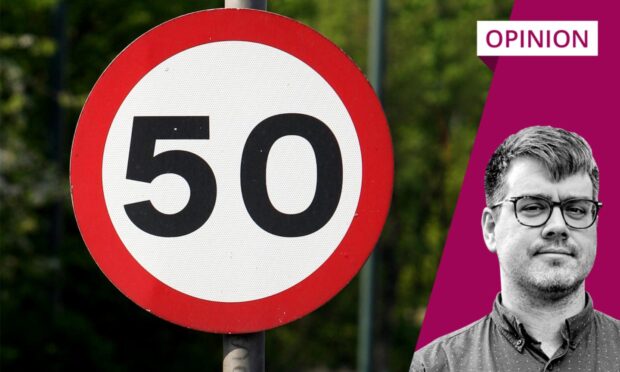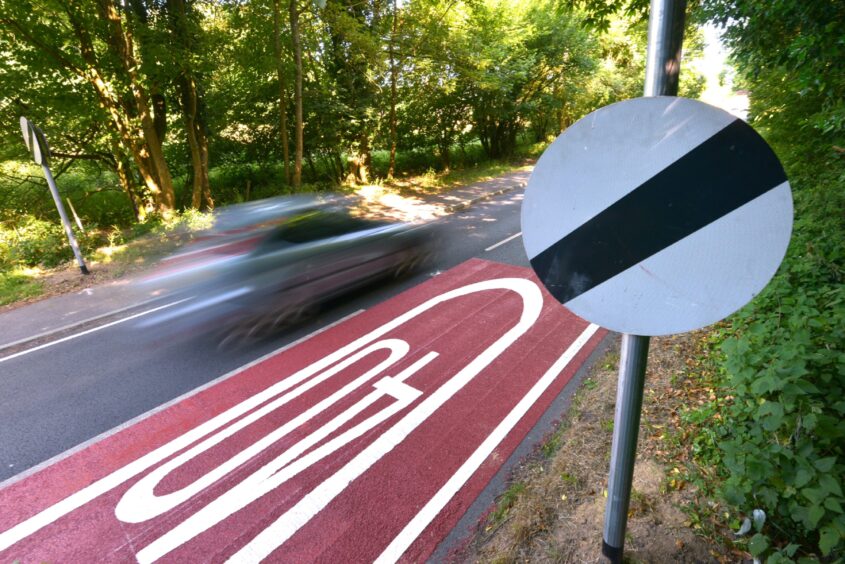I would, I suppose, still be considered a recently qualified driver. At the grand old age of 38 – that’s THIRTY-EIGHT for fans of the BBC football results teleprinter – I passed my test. It was 10th August 2023, and I’ve been thoroughly enjoying driving since.
Now I think I am, generally speaking, a fairly good driver, although I’m still learning every day. I try to drive safely, taking into account the changeable weather and the changeable quality of some of the roads around the City and Shire. I don’t drive too quickly, or too slowly.
Speaking plainly, I try not to be an idiot and drive patiently, with common sense, and I try to be considerate of everyone else around me on the roads, like the vast majority of us.
It is then, with great intrigue, that I’ve been following this conversation around a reduction in the national speed limit on single-carriageways to 50mph.
Now, I can sense your unease, dear reader – no doubt, pre-qualified me would have been thoroughly in favour of slowing you all down for the greater good, speaking from my ivory tower on the upper deck of the 35 bus.
But post-driving me has perhaps a more holistic view, one that’ll hopefully stop me getting chased out of the region at a snail’s pace.
I’m well aware 90% of P&J readers are against it, and 50 mph does, for some roads that we’ve got to get about on, seem a tad on the slow side.
There are things in these policies that I agree with, though. We must be plain about the fact that too many people get killed on Scotland’s roads, and that we must take any practical measures in order to reduce that. It would be foolish to behave otherwise.
We must also realise that speed and severity of injury in crashes is undeniably linked. The faster you are driving, the more you will get hurt in an accident. That is as true for 90mph as it is for 60mph, or 50mph, as it is for 30mph or 20mph. It’s why 20mph zones around schools are sensible.
For every 1 km/h reduction in speed, you get an 8% decrease in fatalities on the roads. We’ve also got a lot of smaller B roads in the region where the speed limit is technically 60mph, but most wouldn’t chance it, unless you fancied a roll in the farmer’s park. But I’ve occasionally come around a corner to find someone barrelling along far too fast, or even worse, a herd of sheep. Reductions here might be helpful.
50mph speed limit is simply not required on all roads
But I think of driving up roads like the A947 to Banff – a road perfectly fine to drive at 60mph, as long as you slow down for the corners.
Most sensible drivers know that the speed limit is exactly that – ‘a limit, not a target’ as my driving instructor would say. And of course, you’re not driving flat out, hard against the limit while going around the bends. The more dangerous parts of the road – the downhill bend coming to Fyvie, for example – already sit at 40mph.
Accidents happen when drivers get frustrated with cars going too slowly
It’s also a road that frequently gets bogged down with tractors and other slow-moving vehicles like gritters, meaning that even if you fancied it you couldn’t get much out of 3rd gear. A 50mph, or 60mph limit makes no difference in that situation.
Stupidity aside, frustration can also lead to crashes – we’ve all been there, considering passing a doddery driver on a Sunday afternoon. While the suggestion to take limits up for HGVs may address some of this, to impose a lower limit on everyone else may increase these risks.
It’s a difficult balance to get right. At the end of the day we all want safer roads to drive on, where we are protected as well as possible against the worst risks.
What might make a greater difference is equalizing the amount of dual-carriage roads in our neck of the woods with other bits of Scotland. Long have the campaigns for the A90, the A96 and A9 been ongoing. The progress has been painfully slow. Fatalities continue, particularly in the Highlands.
While Aberdeenshire, Moray and the Highlands are far from the only bits of Scotland which have these issues, options for quicker transport are sparse, and investment in our major transport infrastructures would be most welcome.
Here there are options to benefit local economies and keep people moving safely. If only the money to do the work could be found.
If a reduction in speed is being considered simply as a cost-free option over investment and improved roads, then we may as well leave the car in the drive.
Colin Farquhar works as a creative spaces manager and film programmer in the north-east culture sector


Conversation